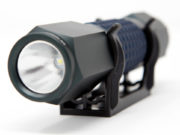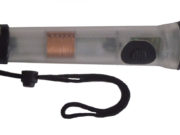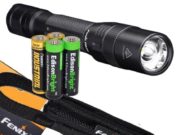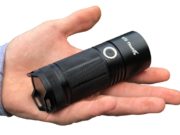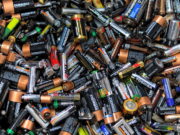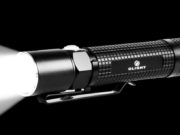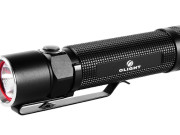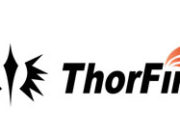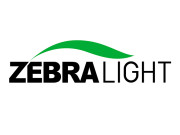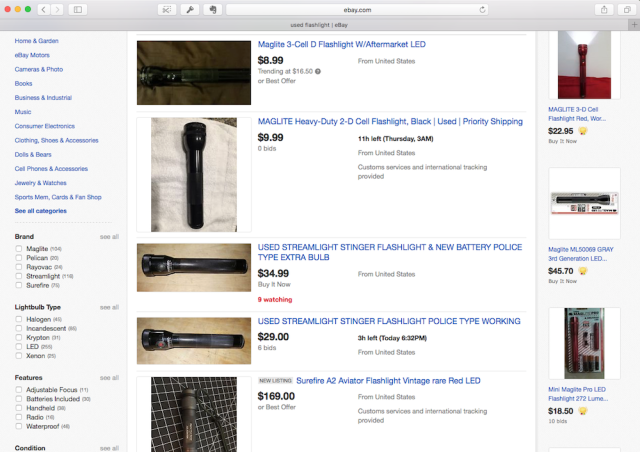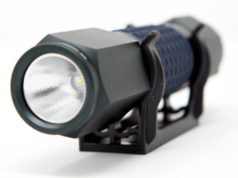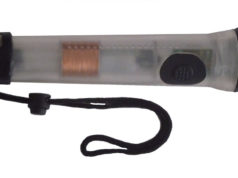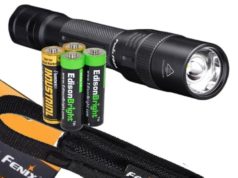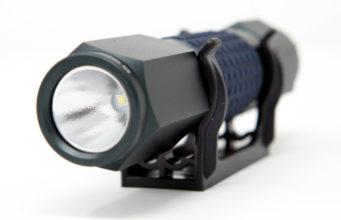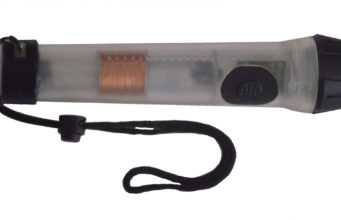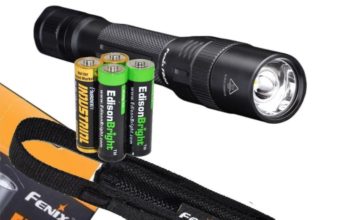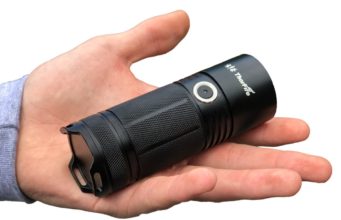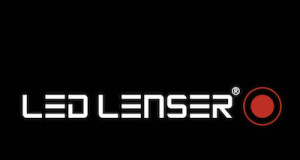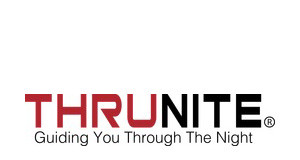Everybody loves a bargain, and there’s no denying that once you get to the higher end of the flashlight spectrum, prices can rise pretty fast.
So it’s no surprise that there’s a reasonably thriving market in used flashlights. For the seller, it’s an opportunity to convert their unneeded hardware into cash. For the buyer, it’s a chance to pick up a quality flashlight (and today’s models can last for years and years) at a decent price. In theory, everyone wins.
Of course, theory doesn’t always translate into practice. If you’re not careful, you may find that your pre-owned flashlight isn’t quite the bargain you thought it was. At best, you may pay too much for it; at worse, it may be completely useless and you’ve wasted your money.
In general, the process of buying a used flashlight falls into one of two categories: a transaction where you get to test the item thoroughly before parting with your cash, or one where you’re buying it at a distance (e.g. on eBay).
We’ll run through the things to look out for both situations, plus highlight the things you should be thinking about no matter where you’re sourcing the flashlight.
Know what you want
In some ways, this is even more important when buying a used flashlight than when buying a new one. Generally you can return a new purchase, or exchange it for a different model. That usually isn’t the case with something you’ve bought second-hand. To ensure you’re getting the right product for you, you should:
- Read reviews
- Try to borrow a similar model from a friend, if possible
- Test a new one in a store. If it’s a slightly newer model, make sure you know the differences between it and the model you’re buying.
Check the price
Spend some time researching the best possible prices online for what you want. Then you can gauge how appealing the used price is.
It’s not uncommon to see items priced higher pre-owned than they’re available new elsewhere. Don’t be caught in this trap – if you know the best available price you can either bypass expensive used goods or try to haggle the price down to what you know is fair.
Another thing to consider is whether a newer model of the same product has been released. If so, it’ll push down the price of the item you’re interesting in. Again, a little research puts you in a better bargaining position.
Finally, be aware that you’re likely to pay slightly more from a face-to-face transaction. By all means, try to get the price down to what you’ve seen online, but don’t be surprised if the seller holds out for a little bit more. You’ve both invested time and effort in meeting up, so it’s no surprise that the seller may expect to get a little extra in return.
If you’re buying on eBay, you can easily do a search to see how much similar models of that item have sold for in the past. It’s a good, but not perfect, indication of how much you can expect to pay.
Check the condition
This is where a face-to-face meeting really wins out. You get a chance to thoroughly check every aspect of the flashlight’s condition,
The most obvious check is that it turns on and functions correctly. (It helps if you’ve read the manual or reviews about how to swap power modes, etc. Don’t rely on the seller showing you how to work it.)
One tip is to bring batteries, if you know the correct size. It’ll prevent the situation where you want to try the flashlight but the seller hasn’t provided batteries. Personally, I’d walk away from any deal where the seller hasn’t put batteries in the light – I’d be too worried about what he’s trying to hide. But if you’re less suspicious than me, bring your own batteries so that you can definitely try it out.
(A scenario where this doesn’t work is where a flashlight has a fixed, rechargeable battery. If you can’t see it working, walk away. If the seller doesn’t have the appropriate leads/charger, walk away. In fact, unless there’s a definite reason why you want that model and you’re 100% happy that the battery is still ok, walk away anyway.)
Once you’ve established it’s working properly, it’s time to take a closer look. You’re basically checking for obvious signs of damage or mis-use. Don’t worry too much about the odd cosmetic scratch here and there – we’re talking more about dings and dents and rattles. Keep an eye out for any signs of corrosion, particularly near switches or seals. You don’t want water getting into the electrics.
Obviously, buying online makes this process harder, and to an extent you have to rely on the seller doing this for you. Look for a listing that has plenty of clear, detailed photos from a variety of angles. View them as large as you can and study them properly. If you see anything that gives you any cause for concern, feel free to ask the seller a question.
Beware any listing that is full of spelling mistakes, poor quality photos or very little information. If the seller can’t be bothered to put up a decent listing, you shouldn’t be bothered to pay any attention.
Ask questions
Whether you’re buying face-to-face or online, asking questions is a great way to learn more about what you want to buy and about who’s selling it to you!
If you ask questions and don’t like the answers you’re getting, it’s a clue that perhaps this is a deal to walk away from. This is especially important online. Remember, the seller is trying to entice you to buy the product: if you get sullen, unhelpful replies to questions then it doesn’t bode well for the whole deal. Trust your instincts.
Research the seller
Here, online wins out – unless you happen to know a friendly private eye who can conduct a background check into your Craigslist seller (but even we think that might be going a little far for a simple flashlight purchase!).
On eBay, check the seller’s feedback. If they don’t have any, or are a new seller, or have poor feedback from other buyers, then either walk away or go into the transaction with your eyes open. Everyone has to start building up their feedback somewhere, so it’s entirely possible that you’ve stumbled upon a newbie but trustworthy seller with a great flashlight at a bargain price. Just think twice, though. There’ll always be another flashlight you can buy.
Basic common sense
Never part with your money without getting the product. For online purchases, stick with a site like eBay, where you can get payment protection by using the likes of PayPal.
If you’re buying via an internet forum (check out the Budget Lights Forum marketplace, for example), try to see if the seller has completed any other deals on the site. Then, if possible, arrange to complete the transaction through eBay. Not everyone will agree to this because of the fees involved, but some sellers will.
If you’re meeting face-to-face, the usual common sense rules apply: don’t put yourself in danger. Try to bring a friend, if you can. Meet in a public, busy place in daylight hours. Don’t agree to meet down a dark alley at night – you might as well just hand over your wallet as soon as you arrive.
What to do if things go wrong
If you’ve bought from a dealer, go back to them and explain the problem. They should help you, though your mileage here can vary wildly. Different states have slightly different consumer protection laws, so check out what your rights are where you live.
One avenue to pursue lies with your credit card company, if you paid by card. They will have various policies to protect their customers, and may look at a chargeback if you can demonstrate that the goods were faulty and the store isn’t playing ball. Again, this varies from company to company, so you need to talk to them and check what they can do.
If you bought from a private seller, in cash, then you can try contacting them and seeing whether they’re willing to help you out. This is probably your least likely chance of redress, but it’s always worth a try.
If you bought on eBay, you can raise the matter with the seller and seek to return the item or, perhaps, to get a discount. If you don’t get any satisfaction, you can file a complaint with eBay or PayPal and try to get your money back. You have to be prepared to be persistent, though, and a resolution can take some time.
In general, most transactions pass off without a hitch and both buyer and seller end up happy. Take a little time to do your homework and – with a bit of luck – you can end up in the happy camp too. Good luck!

